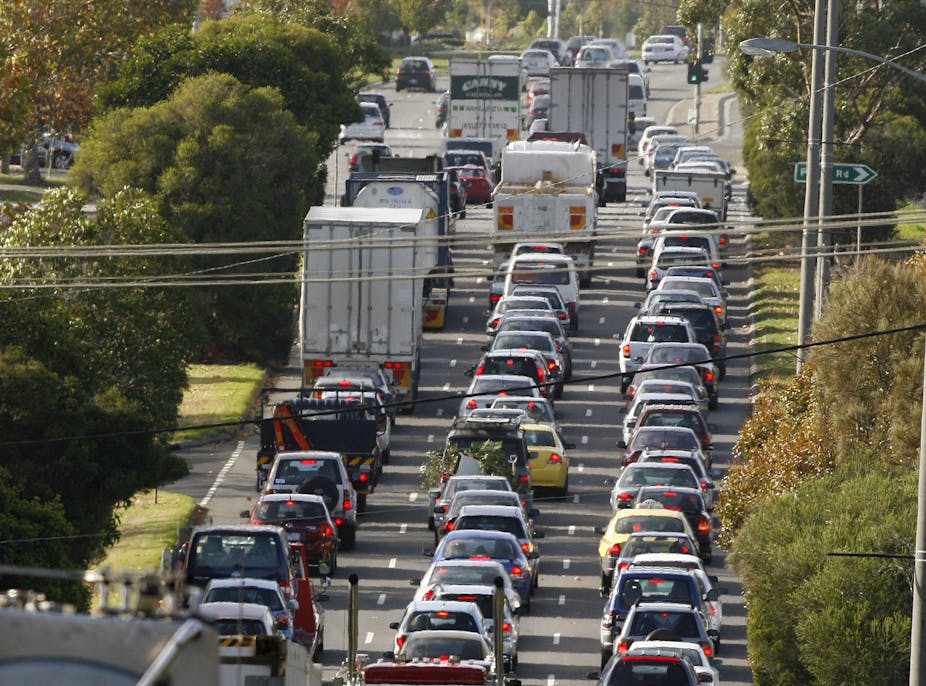The body of evidence on the unhealthy effects of traffic pollution is now longer than a stretch limo.
Our recent Queensland study found pregnant women exposed to greater levels of traffic pollution had shorter gestations - this confirmed four previous studies from the US, Canada, Taiwan and the Netherlands.
Other recent studies have linked traffic pollution with reduced lung and cognitive function, and an increased risk of asthma, breast cancer, lung cancer, childhood leukaemia, heart disease, emergency hospital admissions and death.
Traffic pollution is worst during traffic jams, when multiple engines idle in the same spot.
People who live on the busiest roads will therefore get some of the highest doses (although the people stuck in their cars get a decent dose too).
Depending on wind and topography, the pollutants can also be blown from the roadside to up to 500 metres away.
Traffic pollution contains a range of nasty ingredients including carbon monoxide, nitrogen dioxide and fine particles.
Once inhaled these can irritate and inflame our lungs, and enter the blood stream where they progress the plaques that lead to heart disease.
The health effects of traffic pollution have been compared with passive smoking. This is because they have a similar route of exposure, involve similar chemicals, and cause a similarly wide range of health problems.
Modern vehicles are getting cleaner. But recent increases in the number of cars on the roads and vehicle miles travelled have swamped any improved technology.
Cleaner technology will eventually outstrip demand, and in 25 to 30 years everyone will be driving zero emissions cars. But can we make this conversion to clean air happen faster?
Incentives to speed the conversion include allowing hybrid vehicles to drive in bus or transit lanes (regardless of how many passengers are in the car), exempting hybrid vehicles from council parking fees, reducing the vehicle registration for hybrids, or directly subsiding new purchases.
Other incentives include making it cheaper or easier to take public transport or use bicycles, which have their own health benefits.
Disincentives include increased registration fees for the most polluting vehicles and a congestion charge for city centres.
Closing roads to create more pedestrian areas is another way to reduce exposure (these closures can be permanent or just during the day time).
This approach would be particularly beneficial in those areas where lots of people mingle with lots of traffic, such as city centres.
Closing or distancing busy roads from schools, hospitals and aged care facilities is also worthy of consideration, as children, the sick and the elderly are the most vulnerable to effects of traffic pollution.
Disincentives to traffic are politically toxic because we love our cars, and hate increased costs or increased driving inconvenience.
Votes are far more likely to be won by building more and wider roads. But this is a short-term solution as demand soon meets any new capacity and so creates more traffic pollution.
The analogy is the obese person adding notches to their belt as they get fatter. It may hold their trousers up for a bit longer, but they are heading for an early grave.
An argument for doing nothing in Australia is that our pollution levels are low compared with many other countries.
However, our exposure levels are relatively high because we spend a lot of time outdoors (thanks to our great weather) and design our homes to let the air flow through (which lets the pollutants in).
Most importantly, no study has ever found a safe level of air pollution. So if we lower our pollution levels we will definitely improve our health.

